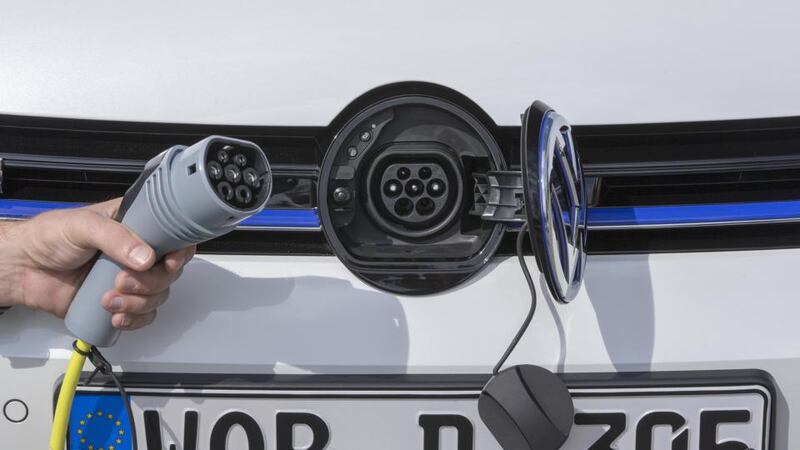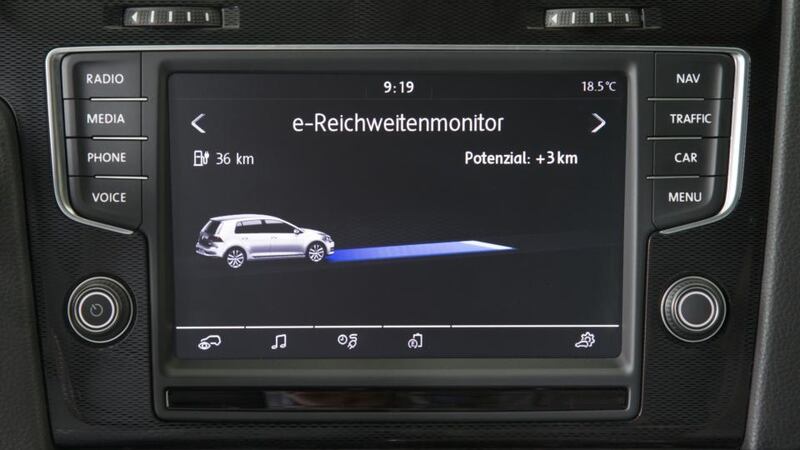Where BMW invested and risked billions with its stand-alone i3 strategy, Volkswagen has delivered a plug-in hybrid that looks like a Golf GTi, goes like a Golf GTi, can drive as an electric car for up to 50km and uses petrol like it’s allergic to the stuff. Who is right and who is wrong? And will we all be buying the GTE instead of the GTi in the future?
When it began its whole alternative energy push, BMW became convinced that the owners of eco-friendly cars really, really wanted people to know they were driving eco-friendly cars. That’s why the i3 and, more convincingly, the i8 look the way they do and they’re about the impression they give off as much as anything else.
VW has taken a different path. It’s sure about the future of electric cars but it’s unsure of when that future will arrive, so instead of a big-risk stand-alone sub-brand, it organised for its MQB architecture to swallow both electric and hybrids systems.


That way, it’s easy to ramp up if people want more and it’s easy to scale back and push more standard cars down the same production line if electric sales don’t meet targets.
That’s the theory, anyway. The trouble is that Volkswagen has gone and built a production plug-in hybrid hatchback so convincing that it threatens the very existence of the cult Golf GTi.
Indeed, the Golf GTE actually gives the Golf family three GT cars and sits alongside the GTi and the GTD, largely because Volkswagen thought its first Golf hybrid would score more street cred points if it was quick and not just eco friendly.
Try the basic numbers for size and you’ll get an idea. The Golf GTE runs to 60km/h in 4.9 seconds and hits 100km/h in 7.6 seconds. It also goes on to a 222km/h top speed, but it’s phenomenally strong at urban speeds, boasting more torque than the GTD, and delivering it instantly.
Tri-clutch transmission It manages all of this because it the powertrain begins with a 110kW, 1.4-litre turbocharged four-cylinder petrol engine up front, hooked up to a six-speed dual-clutch transmission and driving the front wheels. The gearbox casing is stuffed with an extra decoupling clutch (making it effectively a tri-clutch transmission) and a 75kW electric motor, which is powered by an 8.7kW lithium-ion battery pack sitting beneath the rear seat.
If that sounds a touch familiar, it should be. It’s basically identical to the powertrain of the Audi A3 e-tron, but more focused on sporty driving and it’s even more economical.
It has a total system power of 150kW and 350Nm of torque, with the petrol engine contributing 110kW of power between 5,000rpm and 6,000rpm, plus 250Nm of torque between 1,600rpm and 3,500rpm. The electric motor chips in 330Nm from a standstill, which gives the GTE tremendous oomph from a standing start.
It also gives the car 50km of range as a pure electric car.
And all of this comes in a Golf five-door bodyshell that asks no compromises (other than up-front wallet lightening and the installation of a wall-box charger at home). It has the same luggage capacity, air conditioning capacity, interior trim and same equipment as the standard Golf GTi, but a slightly softer ride.
Its likely to be priced close to €38,000 in Ireland after the various grants when it arrives in January. With the more "regular" electric Golf likely to be priced close to €32,000 when it goes on sale here, the relatively short price walk to GTE should mean it will be the biggest selling version of electric Golf.
About the only compromise is in handling, because the GTE weighs 1,524kg. That’s more than 100kg above the GTi’s figure, but the GTE is saved from being even heavier by its lighter 1.4-litre petrol motor.
Weight normally adds fuel consumption, but not in the GTE’s case (well, not while there’s charge in the battery, anyway). VW claims a range of 939km out of the hatch, which includes the 50km of electric driving, plus taking into account recharging on the move via braking and coasting.
Volkswagen admits you should be flattening the battery every day if you want the GTE to pay for itself over your ownership period and twice a day would be even better. It helps out with this because the 8.7kWh battery takes less than four hours to charge from a household socket (or two from fast-charger).
Weight distribution The battery itself sits in a diecast aluminium case that is bolted to the body in five places and the entire thing disconnects from the power system if there’s a crash big enough to set off a seat-belt pretensioner or an airbag. It adds 125kg to the body but because it’s mounted low and just ahead of the rear axle (right where the conventional car’s rear silencer normally goes), it actually gives the GTE a weight distribution that even the GTD can’t match.
It does all of this and claims a fuel economy figure of just 1.5 litres/100km and CO2 emissions of a paltry 35 grams/km – both of which are slightly better figures than the Audi sister car, even though it’s geared up to be driven more enthusiastically.
This is a charming bundle of funand well equipped.
Beneath the buttons, there’s the E-mode, which drives on pure electric power at up to 130km/h.
There’s an EV Hold mode, which means you can drive along on the petrol motor with a full tank of battery, and that’s helpful if you’re commuting. It means you can use petrol power when it’s most efficient (cruising at speed) and save the zero-emission electric motor for downtown work.
Then there’s the GTE mode, which swings every possible piece of motive power to bear to justify the “GT” part of the badge.
And then there’s a battery charge mode, which means you’ll use more petrol because you’re always asking the petrol motor to make the car go and also charge the battery.
Pure electric mode is plenty good enough around town, punching to 60 km/h in 4.9 seconds and topping out at 130 km/h.
In the real world, the GTE asks no compromise from its drivers bar the initial up-front cost and if this is Volkswagen’s way of the future, we can’t wait to see more of it, because this is the best Golf that VW makes today.













